Sun Institute
Solar furnace of Uzbekistan
The official name of this institute is the Institute of Materials Science NPO “Physics-Sun” of the Academy of Sciences of the Republic of Uzbekistan. The Parkent Sun institute consists of a complex of heliostats, a solar laboratory (a massive solar energy concentrator, 42 meters high), and a famous large solar furnace that was built second in the world, after the first one in Font-Roma-Odeillo in Southern France.
The helio-concentrator is impressive with its 10700 small mirrors, carefully designed to refract the light. The institute is located at an altitude of 1100 meters, which also provides tourists a nice panorama. The institute makes a nice day trip from Tashkent together with the Parkent town and it can be also included in one of our Uzbekistan Tours.

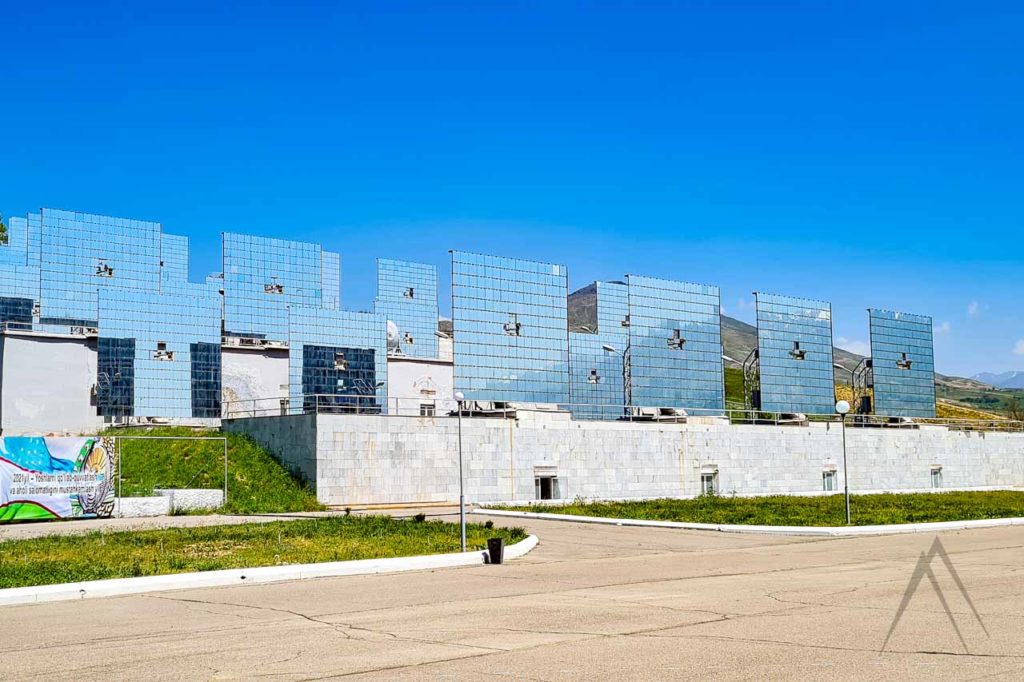
Parkent Sun Village
Institute of the Sun is located 45 km east of Tashkent in the Parkent district, at the village named “Kuyosh”, which translates as “Sun” and was originally built for the Institute’s employees. The location was chosen for a reason by the academician S.A. Azimov. The clean mountain air is very well suited for the 62 heliostats at the institute and means that the sunlight can be focused to one point very well without too much scattering in the atmosphere and the system can therefore reach impressive temperatures at the fixed point of concentration.
Construction of the Sun Institute
Parkent sun institute is called the child of Sadyk Azimov, because it was him who laid the foundation for solar materials science in Uzbekistan. The construction lasted from 1981 to 1987. The system built on an open hill in an ecologically clean area where the number of average sunny days per year is nearing 280.
At the base of the building site there is a solid slab of natural origin, which guarantees the maximum accuracy of the complex’s work even in unfavorable seismological situations.

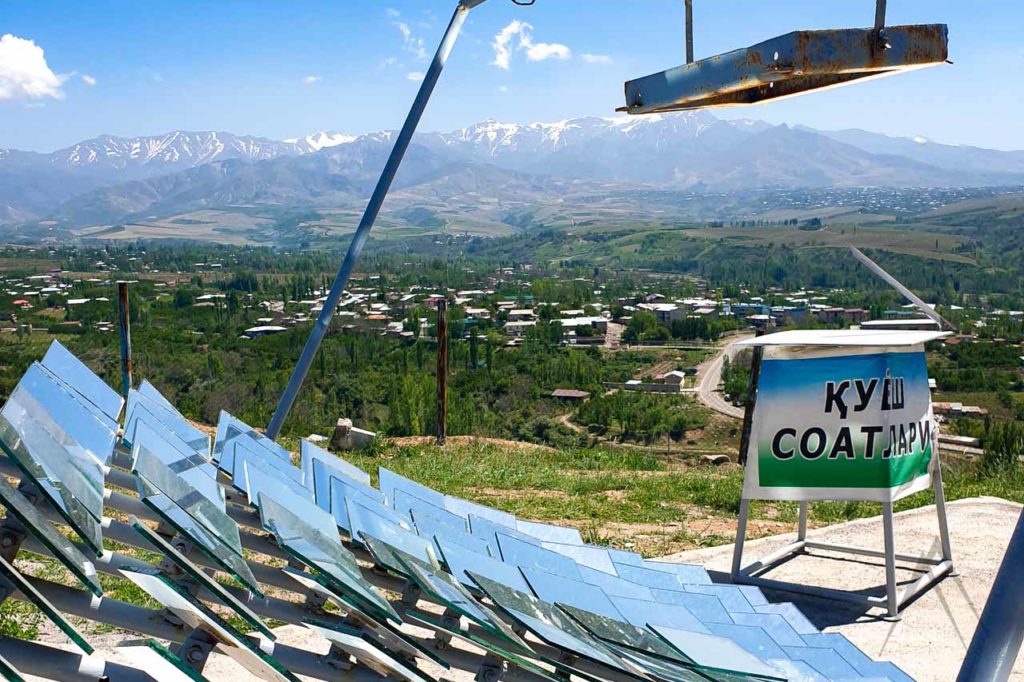
The Aim of the Institute
The primary tool of the Institute is a large solar oven designed to create very high temperatures quickly in order to melt high-quality metals and alloys without any contaminants. Furthermore, the institute holds many scientific laboratories for various research topics. Seminars are being held and the training center for specialists is also still running. The institutes’s main focus is yet educational, to study the Earth’s main source of energy – the Sun: its origin, current activity, as well as future evolution and everything directly related to our own star.
Parkent Solar Oven
The institute has a unique scientific object – a large solar oven. A complex optical-mechanical complex with an automatic control system, consisting of a heliostatic field and a paraboloid concentrator, forms a high-density radiant stationary flow in the focal zone of the concentrator (technological tower). The reflecting surface of the heliostat field is 3022.5 sq.m. and the concentrator’s 1840 sq.m.
The concentrator focuses the sun rays reflected by the heliostat field onto a focal zone with a diameter of 1 m, where a high-energy region is created. The focal area is located in the technological tower, where special devices and equipment have been installed, allowing to study the physicochemical processes of different sybstances occurring during high-temperature exposure.
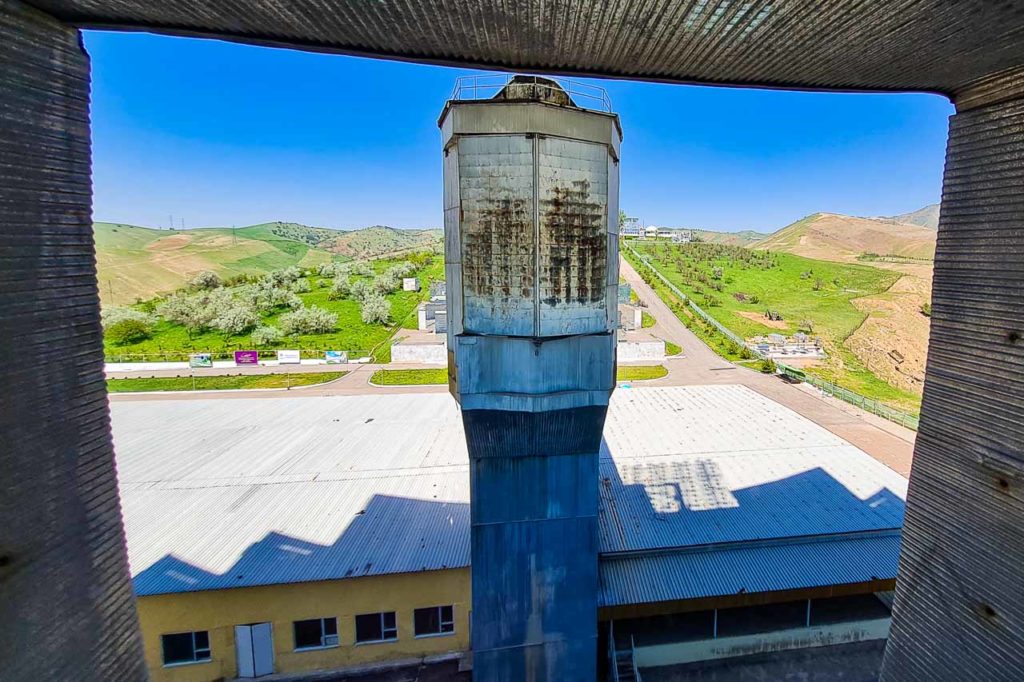
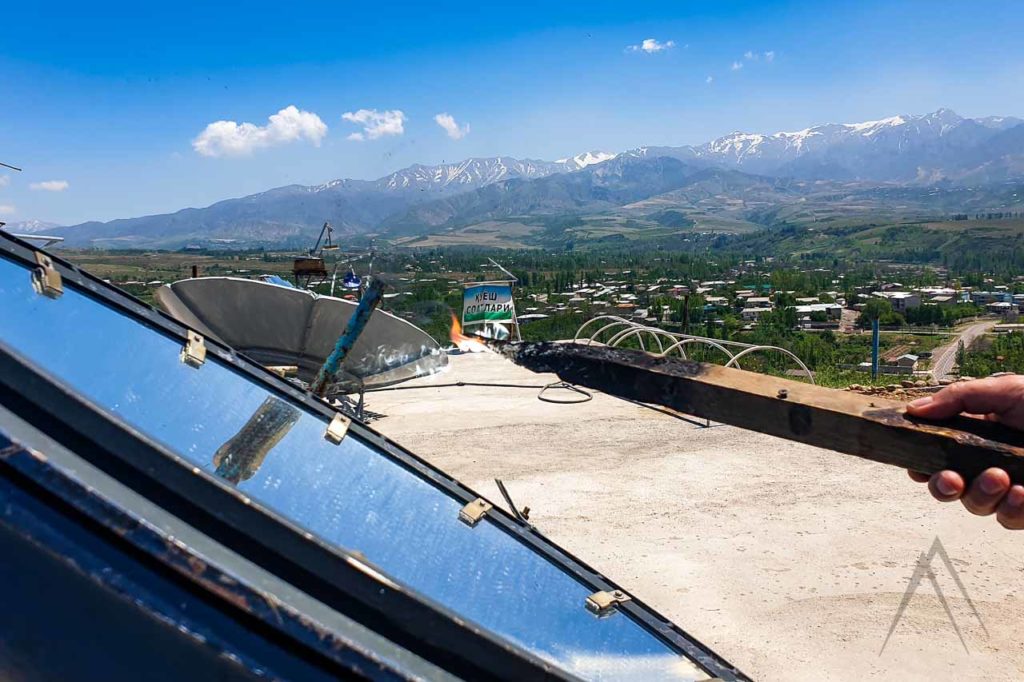
How the solar laboratory works?
The solar laboratory consists of three objects that represent a single scientific and technical complex. The solar energy concentrator receives the flow of rays from the system opposite the heliostats and the technological tower, through a special window, in which a concentrated solar energy flow with a capacity of one megawatt. The solar energy concentrator consists of 10,700 mirrors and the dimensions of the hub are 54 by 47 meters.
The set of heliostats has 62 controlled mirror sets, each of them measuring 7,5 x 6,5 meters, consisting of 195 50 cm2 mirrors resulting in 12090 mirrors accumulating the sun’s rays.
Technological Tower
Here granules of refractory metals are pressed into briquettes at a temperature reaching 3000 C. There is a round 1 m diameter hole equipped with shutters that receives the enhanced rays of the sun. The institute was once a classified object, which had a “military” status “. Work on testing different surfaces for spacecraft and various military equipment was concluded here.
Nowadays the institute serves only peaceful research though. It has designed a #Ceramics” production line ” while ceramic products are made based on materials synthesized in the Big Solar Furnace. They have unique operational and physicochemical characteristics (low coefficient of thermal expansion, high strength and heat resistance in extreme environments, a wide range of applications).
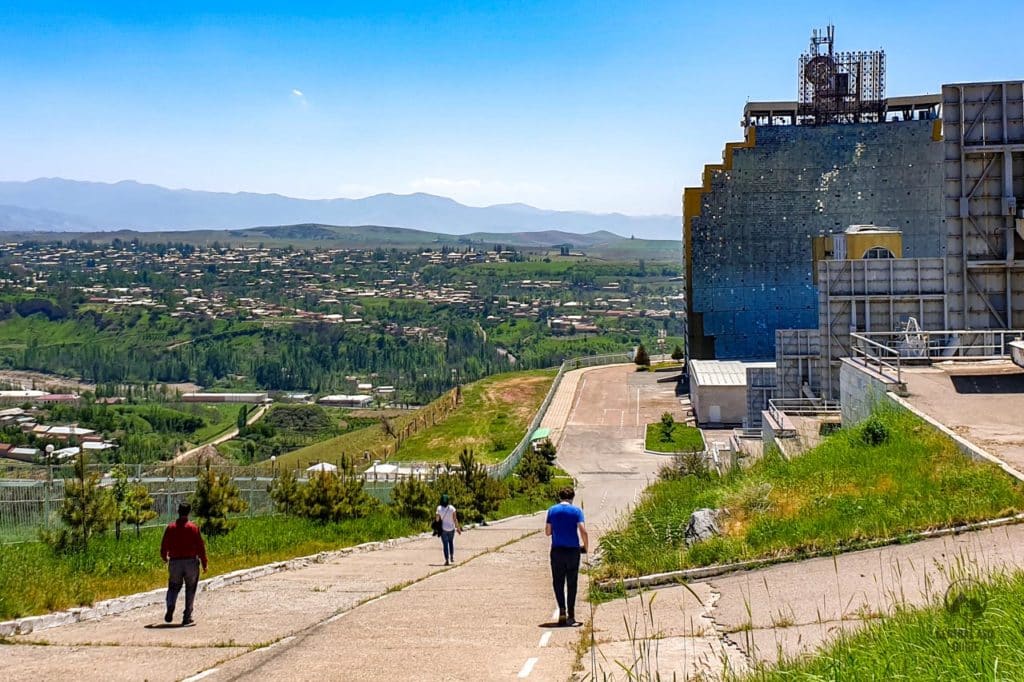
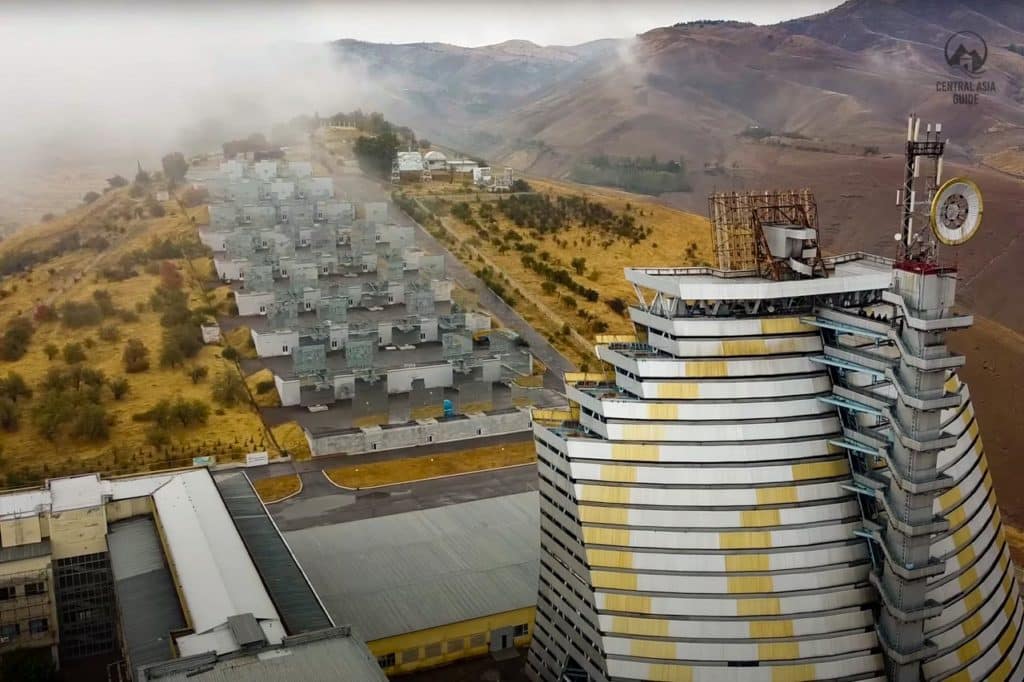
Parkent Town
Parkent is a town with about 35 000 inhabitants at the foothills of the Western Tien Shan. The history of the current Parkent belongs to a Sogdian ancestor, Farnkent, the “city of Farn” – a Zoroastrian deity, the composition of sunlight. You can have lunch at Parkent in the canteen after the bazaar to buy some water and drinks.
in order to visit Parkent take a marshrutka from Kuilyuk bazaar on the southeast outskirts of Tashkent or simply a taxi. The trip takes about 1,5 hours. Arriving at Parkent bazaar, you can change the transportation to get to the sun institute easily by taking a local taxi by the main road going through the town. It might be hard to get a taxi back unless you make a deal with the driver to come get you back. It is always an option to walk to the main road and ask for a ride from the passing cars against a small fee.
Parkent Mador Samsa
Parkent is popular for its Mador Samsa, prepared from special green plants that are extracted high in the mountains. Allegedly the best chefs of this wonderful spring dish are in Parkent. This treat is only available during the spring and early summer when the nearby hills and mountains are green.
Inside the Mador Samsa one can find steamed, green fresh herbs that give it a particular and quite different taste than the more common meaty version. Mador Samsa is a great example of a local Uzbek food that is not available everywhere.
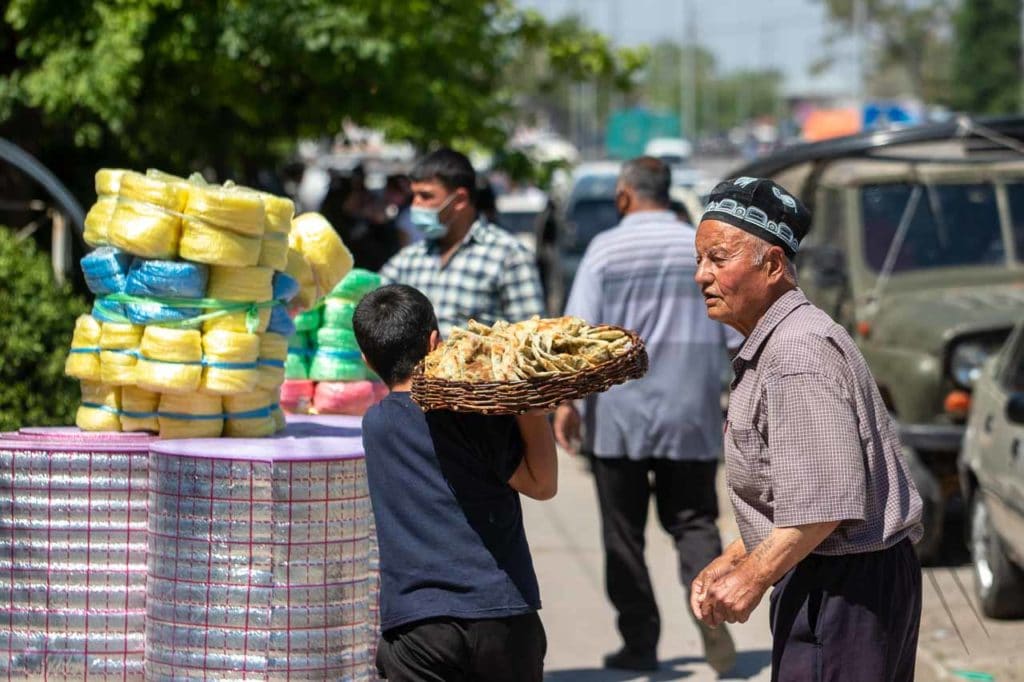
Sights near Parkent Sun Institute
Page updated 20.6.2021